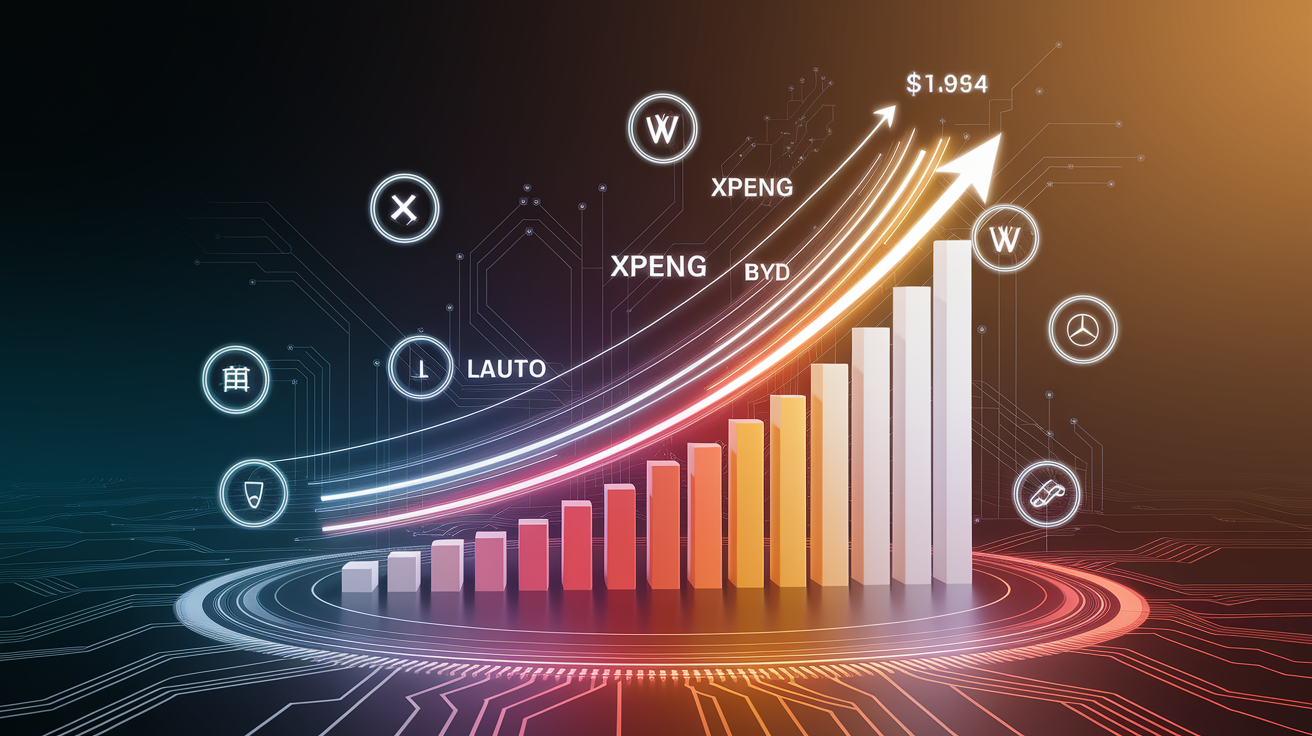The field of tension between electric vehicle manufacturers and traditional automotive icons is witnessing a fascinating race for revenue growth. While electric pioneers such as Xpeng, BYD, and Li Auto record impressive growth rates, established brands like Volkswagen, BMW, and Mercedes-Benz are focusing on stability and strategic investments in electric mobility. This article highlights the growth dynamics of both sectors and the challenges they face along their journey. It becomes clear how the future of the automotive industry might shape up.
Dynamic Growth and Challenges of the EV Industry

The electric vehicle industry is currently experiencing remarkable growth, which is clearly reflected in the increase in sales and advancing technology. In 2023, over 13.5 million electric cars were sold worldwide, representing an impressive annual growth rate of over 34%. This dynamic is primarily driven by the growing demand for eco-friendly transportation solutions and the increasing affordability of battery technologies.
Technological innovations, particularly in the field of batteries, play a central role in the appeal of electric vehicles. Advances in lithium-ion batteries and the development of solid-state technologies are enhancing efficiency and safety, convincing more and more consumers. This strategically positions electric vehicle manufacturers to gain market share from traditional cars, especially in regions like Europe, where Chinese manufacturers such as BYD held a 21.7% share in 2023.
At the same time, electric vehicle manufacturers face challenges. Significant pressure comes from price competition, particularly from the ability of Chinese manufacturers to produce models at lower costs. This forces European manufacturers to optimize their production costs. Additionally, the growing number of electric vehicle models intensifies competition.
Traditional car manufacturers, on the other hand, are feeling the pressure to electrify their fleets and keep pace with the new market conditions. While making significant investments to transform their production lines, they benefit from their long-standing market presence and established networks. Regulatory requirements compel them to meet emission targets, accelerating electrification.
The future of the automotive industry appears to be characterized by the electric revolution. Even though traditional manufacturers must adapt, their vast experience and technological integration capabilities offer opportunities for successful competition. The battle for growth between electric vehicle manufacturers and traditional automotive giants will undoubtedly continue to define the dynamics of the sector.
Market Dynamics and Innovation Potential: Electric Vehicles Competing with Traditional Manufacturers

The international automotive industry is in the midst of a significant metamorphosis, presenting notable challenges for both established and new manufacturers. While traditional manufacturers strive to adapt their time-tested processes to a new electrified world, electric vehicle makers seize the opportunity to expand their market dominance through innovative approaches and technologies.
Technological change poses a major difficulty for traditional car manufacturers. The shift towards electric propulsion requires substantial investments, particularly in battery and software technology. European brands face strong competition from Chinese companies like CATL and BYD, which are often at the forefront of technological innovation. This leads not only to increasing innovative pressure but also to strategic dependencies on Asian suppliers, who offer low-cost electric vehicle models.
Moreover, regulatory upheavals challenge the sector. With stricter CO2 emission targets and modified subsidy structures, traditional manufacturers must reinvent themselves. Notably, the still inadequate charging infrastructure in many regions remains a barrier to the acceptance and diffusion of electric vehicles.
However, there are also multiple opportunities. The rapid expansion of the electric market allows traditional manufacturers to capture new market shares and, with the right strategy, to combine existing strengths with new technologies. Ford stands out in this regard: through the planned expansion of their electric vehicle portfolio, they aim for a combination of innovation and affordability, targeting more economical models.
For electric vehicle manufacturers, reducing battery costs is a double-edged sword: on one hand, the increasing environmental awareness attracts new customer segments, on the other hand, purchase costs often remain higher than those of traditional vehicles. However, technological advancements and government subsidies could offset this disadvantage. In many countries, incentives and government subsidies promote the acceptance of electric cars, further accelerating growth potential.
In summary, the ability to adapt to changing market conditions and to innovate technologically will define the future success factors of the industry. While traditional manufacturers will need to adapt their strategies much more agilely, new suppliers will benefit from the growing demand and the continually expanding market for electric vehicles.